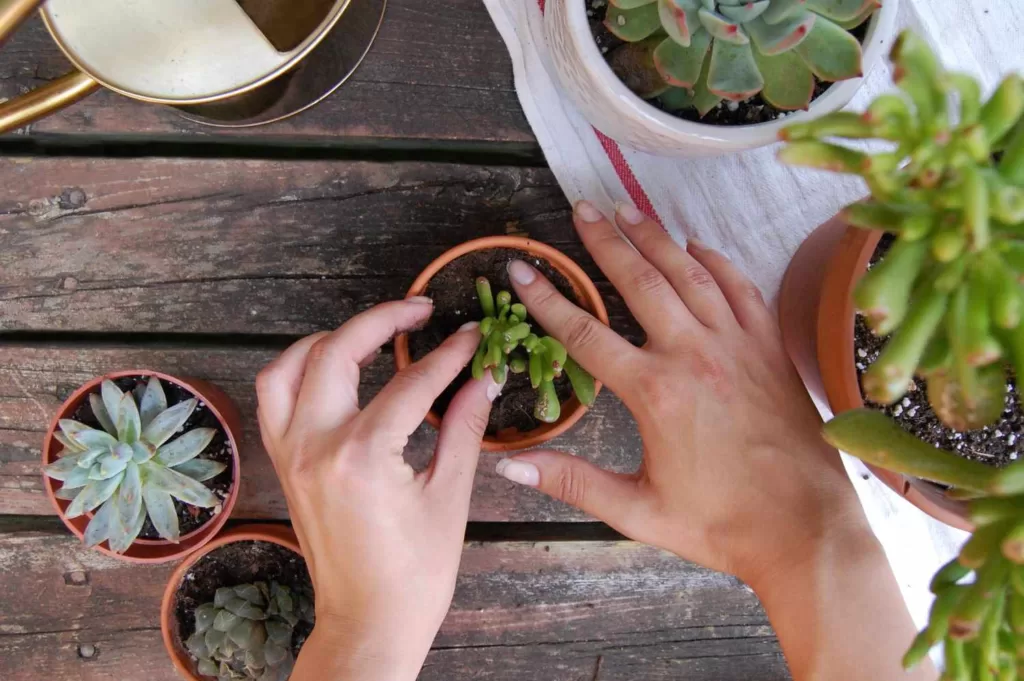Indoor plants are not only a beautiful addition to any room, but they can also offer numerous benefits to our physical and mental health. Research has shown that plants can improve air quality, reduce stress, and boost our mood. In this article, we will explore 10 mood-boosting indoor plants that don’t need sunlight, so you can easily incorporate them into your home or workspace.
Benefits of Indoor Plants
Indoor plants offer a wide range of benefits for our physical and mental health. They can help improve air quality by removing toxins and producing oxygen, which can lead to better breathing and overall health. Plants have also been shown to reduce stress and anxiety levels, increase productivity and creativity, and even lower blood pressure.
How Indoor Plants Can Boost Your Mood
Studies have shown that indoor plants can have a positive impact on our mental health by reducing stress levels and improving our overall mood. Plants can create a calming environment and promote feelings of well-being and relaxation. The presence of plants can also increase our creativity and productivity levels.
10 Mood-Boosting Indoor Plants That Don’t Need Sunlight
- Snake Plant: This plant is also known as the mother-in-law’s tongue and is one of the most popular low-light plants. It has long, thin leaves that are very easy to care for and can help purify the air by removing toxins.
- Peace Lily: The peace lily is a beautiful plant that produces white flowers and can also help purify the air. It thrives in low to medium light and prefers moist soil.
- Chinese Evergreen: This plant is known for its striking leaves that come in a variety of patterns and colors. It can thrive in low to medium light and prefers moist soil.
- ZZ Plant: The ZZ plant is a very low-maintenance plant that can thrive in very low light conditions. It has waxy leaves and can go for weeks without watering.
- Pothos: This plant is known for its long, trailing vines and can add a pop of green to any room. It can thrive in low to medium light and prefers moist soil.
- Spider Plant: The spider plant is a very easy-to-care-for plant that can thrive in low to medium light. It has long, thin leaves that can grow up to 12 inches long.
- Boston Fern: This plant is known for its long, cascading fronds and can thrive in low to medium light. It prefers moist soil and needs to be watered regularly.
- Philodendron: The philodendron is a very popular houseplant that can thrive in low to medium light. It has large, heart-shaped leaves and prefers moist soil.
- Dracaena: This plant comes in a variety of shapes and sizes and can thrive in low to medium light. It prefers well-draining soil and needs to be watered regularly.
- Rubber Plant: The rubber plant is a very easy-to-care-for plant that can thrive in low to medium light. It has large, glossy leaves and prefers moist soil.
Tips for Caring for Indoor Plants
To ensure that your indoor plants continue to thrive and provide their mood-boosting benefits, it is important to care for them properly. Here are some tips for caring for your indoor plants:
- Water your plants regularly, but be careful not to overwater them.
- Use well-draining soil to prevent root rot.
- Keep your plants away from cold drafts and direct sunlight.
- Dust the leaves of your plants regularly to keep them clean and healthy.
- Fertilize your plants once a month during the growing season.
- Prune your plants as needed to keep them healthy and prevent them from becoming too
10 Mood-Boosting Indoor Plants That Don’t Need Sunlight
- Snake Plant (Sansevieria trifasciata) The snake plant is also known as the mother-in-law’s tongue plant because of its long, sharp leaves. It is one of the most popular houseplants because it’s incredibly easy to care for and can survive in low-light conditions. Snake plants are known for their air-purifying properties, making them a great addition to any home or workspace. They can help reduce toxins in the air and increase oxygen levels, leading to a more calming environment.
- ZZ Plant (Zamioculcas zamiifolia) The ZZ plant is another low-light-tolerant plant that is known for its ability to improve air quality. It has glossy green leaves that can grow up to three feet long, making it a great statement plant for any room. ZZ plants are also drought-resistant, making them perfect for people who are not experienced in plant care. This plant can add an element of calmness to any space with its unique shape and lush green foliage.
- Peace Lily (Spathiphyllum) The peace lily is a beautiful plant that is easy to care for and can thrive in low-light environments. It has large, glossy green leaves and white flowers that bloom sporadically throughout the year. Peace lilies are known for their ability to remove harmful toxins from the air, making them a popular choice for people with allergies. They are also believed to have a calming effect on the mind, making them a great addition to any living space.
- Spider Plant (Chlorophytum comosum) The spider plant is a classic houseplant that is known for its ability to purify the air and improve mood. It has long, slender leaves that arch gracefully over the sides of its container, giving it a distinctive look. Spider plants can thrive in low-light conditions, making them a great addition to any room in your home. They are also very easy to care for, making them perfect for beginners.
- Boston Fern (Nephrolepis exaltata) The Boston fern is a popular indoor plant that is known for its ability to improve air quality and reduce stress levels. It has long, arching fronds that are densely packed with small, delicate leaves. Boston ferns require a bit more care than some of the other plants on this list, but they are well worth it. They can add a touch of elegance to any room with their graceful, feathery foliage.
- Chinese Evergreen (Aglaonema) The Chinese evergreen is a low-maintenance houseplant that can thrive in low-light conditions. It has large, glossy leaves that come in a variety of colors, from dark green to silver. Chinese evergreens are known for their air-purifying properties and ability to remove harmful toxins from the air. They can also help improve mood and reduce stress levels, making them a great addition to any home or office.
- Cast Iron Plant (Aspidistra elatior) The cast iron plant is a hardy houseplant that can tolerate low-light conditions and neglect. It has dark green, lance-shaped leaves that grow up to two feet long, giving it a unique look. Cast iron plants are known for their ability to improve air quality and reduce stress levels, making them a great choice for any space.
- Peperomia (Peperomia obtusifolia) Peperomia is a low-growing houseplant that is perfect for small spaces. It has glossy green leaves that come in a variety of shapes and sizes, from round to heart-shaped. Peperomias are known for their air-purifying properties and ability to reduce stress levels
- ZZ Plant (Zamioculcas zamiifolia) The ZZ plant is a popular choice for low-light spaces, as it can thrive in almost any conditions, including low humidity. It has shiny, dark green leaves that grow in a pattern that resembles feathers. This plant is known for its air-purifying abilities and can remove toxins such as benzene and formaldehyde from the air. It has also been shown to reduce stress and anxiety.
- Peace Lily (Spathiphyllum) The peace lily is a hardy plant that can tolerate low-light conditions and is easy to care for. It has glossy green leaves and produces white flowers that can last for weeks. This plant is known for its ability to improve air quality by removing toxins such as benzene, formaldehyde, and ammonia from the air. It can also help to reduce stress and anxiety.
- Snake Plant (Sansevieria trifasciata) The snake plant, also known as mother-in-law’s tongue, is a low-maintenance plant that can thrive in low-light conditions. It has tall, upright leaves that grow in a rosette pattern, and it can be a great addition to any room. The snake plant has been shown to improve air quality by removing toxins such as benzene, formaldehyde, and trichloroethylene from the air. It can also help to reduce stress and anxiety.
Tips for Caring for Indoor Plants
Caring for indoor plants can seem overwhelming, especially if you are new to plant parenting. However, with a little bit of knowledge and some patience, anyone can successfully care for indoor plants. Here are some tips to help you care for your mood-boosting indoor plants:
Watering: Most indoor plants prefer to be kept moist but not soaking wet. Overwatering can cause root rot, which can be fatal for your plants. Check your plant’s soil regularly and water it when the top inch of soil is dry to the touch.
Fertilization: Indoor plants should be fertilized regularly during the growing season to ensure they receive the nutrients they need to thrive. Use a balanced, water-soluble fertilizer and follow the manufacturer’s instructions for application.
Pruning: Regular pruning can help your plants grow fuller and healthier. Remove dead or yellowing leaves and stems, and trim back any overgrown or leggy branches.
Pests: Common indoor plant pests include spider mites, mealybugs, and scale insects. Check your plants regularly for signs of infestation and treat them promptly if you notice any pests.
Indoor plants are a simple and affordable way to improve our mood and overall well-being. Whether you are looking for a low-maintenance plant for your bedroom or a statement piece for your living room, there is a mood-boosting indoor plant that will fit your needs. By following these care tips and choosing the right plants for your space, you can enjoy the many benefits that indoor plants have to offer.





